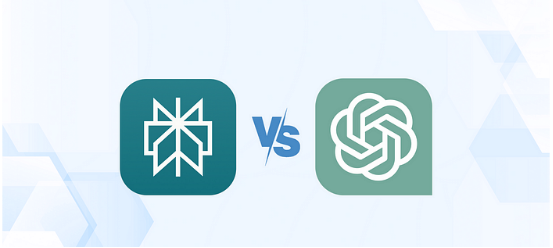Comparison of Perplexity and ChatGPT: Which AI Tool is Better?

After testing Perplexity and ChatGPT, two of the most popular AI assistant tools, I am going to share some insights to help you decide which AI model might suit you best. Both Perplexity and ChatGPT offer similar yet distinctly different experiences; which AI assistant should you trust to meet your needs? Alternatively, you can choose XXAI, which integrates 13 popular AI models, including Perplexity and ChatGPT.
Exploring Perplexity and ChatGPT: Distinctive AI Assistants
First, let's take a look at the basic features of these two AI assistants. Perplexity is known as an "answer engine," allowing users to acquire information in a new way. ChatGPT, on the other hand, is a "chatbot/assistant" focused more on conversational interaction, excelling at natural dialogue with users. Technically, the way they handle prompts is quite different; a deeper look reveals the intrigue within.
ChatGPT: Who Is It For?
In its growing user base, ChatGPT is favored by people in various fields:
- Researchers: Assists in interpreting complex topics and clarifying ideas.
- Developers: Provides help in learning and correcting errors.
- Professionals: Helps in generating reports and managing various work tasks with ease.

Perplexity AI: Who Is It Designed For?
Perplexity, on the other hand, is ideal for users with different needs:
- Search Enthusiasts: Wanting to move away from traditional search engines to get concise AI answers.
- Information Simplifiers: Viewing complete summaries and references in a single interface.
- Precision Seekers: Offering tailored responses and ongoing support.
ChatGPT: Overview
OpenAI and its innovative product need no introduction, as it has proven to be a boon for researchers, students, and anyone familiar with using ChatGPT. At the New York Times DealBook Summit on December 4th, OpenAI's CEO Altman mentioned that the ChatGPT product scale has been expanding, with over 300 million weekly active users and over 1 billion messages sent to ChatGPT daily, highlighting users' dependence on and active use of this AI chatbot.

ChatGPT can be accessed in two ways:
- ChatGPT Free Plan: Available since November 2021, it's the most popular way to use ChatGPT, providing free access. The free model evolved from GPT 3.5 and now operates on the GPT 4o mini model, offering limited but necessary AI assistance.
- ChatGPT Plus: A paid subscription costing $20 per month, providing access to GPT 4 and GPT 4o, and offering access to OpenAI o1-preview, OpenAI o1-mini. It includes advanced features like using DALL E 3 to generate AI images and accessing GPT models.
Perplexity AI: Overview
Perplexity AI is initiated by Big Brains from former employees of OpenAI, Meta, and Coursera, including brilliant students from universities like Harvard, Stanford, and UC Berkeley. It uses natural language processing (NLP) and machine learning, similar to ChatGPT. This NLP helps AI understand user prompts and associate them with its data to provide results. Unlike ChatGPT, Perplexity AI is not just an AI chatting assistant but also aims to enhance users' search experience and provide knowledge through AI.
Neither a search engine nor a chatbot, Perplexity is a fusion of both, referred to as an "answer engine."

Perplexity AI is accessible in two ways:
- Perplexity AI Free: Available to everyone, this plan allows access to default engine searches and 5 professional searches every 4 hours.
- Perplexity Pro: A paid plan priced at $20 per month, granting access to GPT 4o, Claude 3, Sonar Large (LLama 3.1), and Perplexity's default AI models. It supports unlimited file upload and analysis, and visual answers using Playground AI, DALL-E, SDXL, etc.
Key Differences Between ChatGPT and Perplexity AI
Core Features of ChatGPT:
Conversational AI and Multimodal Interaction: Designed for human-like conversations, ChatGPT maintains context throughout interactions. With the release of GPT-4o, ChatGPT introduced multimodal capabilities, allowing it to handle text, image, and audio inputs. Users can interact with ChatGPT through voice or text, making it an adaptive assistant suitable for both casual and professional environments.
Creative Content Generation: Widely used for generating creative content, such as blog posts, social media captions, stories, and even code. Its versatility allows users to leverage it for a variety of writing tasks, whether drafting emails or brainstorming. While specialized tools like Jasper might offer more control, ChatGPT remains an excellent choice for general creative tasks.
Applications Beyond Text: Apart from generating text, ChatGPT can perform various tasks like solving math problems, analyzing data in charts and tables, translating languages, and creating visual content using DALL-E integration. This makes it a comprehensive AI assistant for both technical and non-technical users.
Custom GPT and Plugins: Users can extend ChatGPT's capabilities through plugins and custom GPT. This functionality allows ChatGPT to integrate with external tools like WolframAlpha or be customized for specific tasks, making it a powerful solution for developers and businesses. Additionally, it supports interactive AI models tailored according to user-specific needs, enabling a more personalized experience.
Source Aggregation and Data Analysis: Although ChatGPT's responses primarily stem from its pre-existing knowledge, it can analyze user-provided documents and offer summaries, insights, or data analysis. While Perplexity AI excels in providing source-backed information from live web searches, ChatGPT shines in aggregating vast amounts of data and providing contextually relevant answers.
Core Features of Perplexity AI:
Real-Time Web Search and Information Retrieval: Perplexity AI offers real-time web search capabilities, extracting information from the latest sources. Whether academic databases, news articles, or general web content, the platform ensures its responses are timely and relevant. This feature is especially appealing to professionals needing the most up-to-date insights.
Source Citations and Transparency: A standout feature of Perplexity AI is its transparency with sources. Every response is accompanied by citations, allowing users to verify information and delve deeper when needed. This makes Perplexity exceptionally reliable for research and academic purposes where source credibility is crucial.
Interactive Search Experience with Copilot: The Copilot feature enhances user interactions by asking clarifying questions and optimizing search results. Powered by GPT-4, Copilot improves response accuracy and helps users efficiently address complex queries.
Versatile Content Handling: Perplexity AI supports various content types, from text and code to math problems and tables. It offers advanced summaries for lengthy articles and human-like explanations, making complex information more digestible. This versatility makes Perplexity an all-encompassing research assistant.
User-Centric Design and Accessibility: The platform is designed with user experience in mind, offering a seamless interface and options like dark mode, iOS and Android mobile app support, and a Chrome extension for on-the-go queries. These features make Perplexity accessible and convenient across different devices and environments.
Multimodal Capabilities: Integrated with foundational models like GPT-4 and Claude, Perplexity can handle more complex queries involving different media formats (e.g., images and PDFs), enhancing its response spectrum.
Frequently Asked Questions
Is Perplexity powered by ChatGPT?
Yes, Perplexity uses OpenAI's language models and other models as its foundation.
What is the difference between Perplexity and ChatGPT?
The main difference between Perplexity and ChatGPT lies in the language models they use. Perplexity utilizes the standard default perplexity model with Claude 3.5, GPT 4o, and Llama 3.1, while ChatGPT is entirely based on OpenAI's GPT models.
How does Perplexity AI handle multimodal inputs (e.g., images, voice, PDFs) compared to ChatGPT?
Perplexity AI mainly focuses on text-based data; although it supports file uploads, it lacks the advanced multimodal features (such as voice or image interaction) found in platforms like ChatGPT.
Conclusion
Both Perplexity AI and ChatGPT are powerful AI tools suited for different audiences and needs. Perplexity AI is ideal for users prioritizing verifiable sources and accurate, real-time information retrieval, especially valuable for researchers and professionals, offering precise, citation-supported responses with advanced search, guided queries, and information organization capabilities. In contrast, ChatGPT is a more feature-rich AI, excelling in creativity, interaction, and dialogue, suitable for content creators, business automation, and educators. Its extensive knowledge base, multilingual support, and multimodal interaction allow it to meet diverse needs.
In summary, choose Perplexity AI if accuracy and research are your priorities; for flexible handling of creative tasks and interactive applications, ChatGPT is more suitable. Ultimately, it depends on your need for knowledge-intensive research or interactive applications.